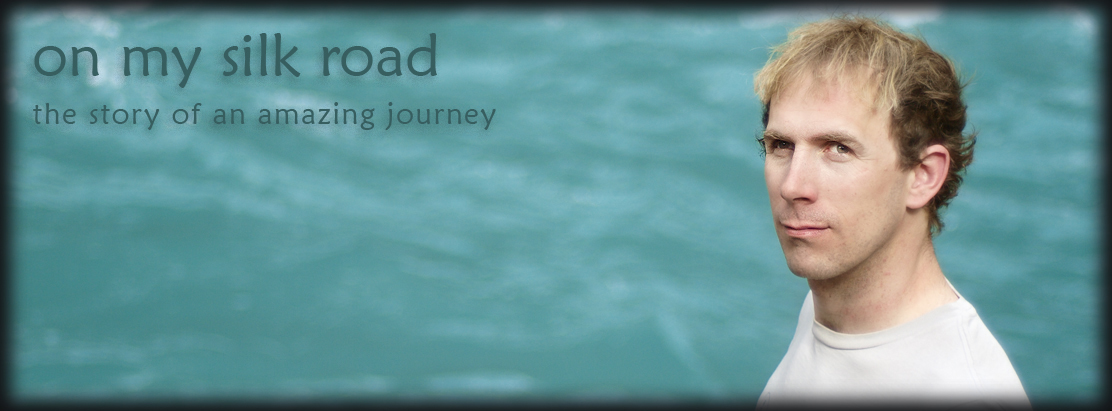04.06
I start Bosnia and Herzegovina with a picture-less post. We saw Sarajevo a lot of times on the telly.
I arrived to Sarajevo by bus reading “The most wonderful word” a Margaret Mazzantini novel. I didn’t know anythiLng about the book, just that Sarajevo was in it. I started reading how the main character, Gemma, arrived there for the first time like me. Sarajevo was a normal city like any other in Europe, the war was not anticipated. I read how she discovered the city and its people, I soon found myself involuntarily following her steps. My first meal was Cevapciciy(grilled meatballs mmmmm) as her first meal was.
Goiko accompanied her during her first visit, I was accompanied by her. Goiko was her guide while she was investigating something for the university, there she met Diego, her future husband and Sarajevo, a city visited as a curiosity that became another character in her life. Sarajevo changed her life several times and I go around it’s streets remembering her feelings and I living her memories, it has been extremely interesting.
I walk around it’s streets and come across the things that Gemma talked about, the plaza where the old guys play chess or the too many(as she says) bridges over the Miljaka.
I’ve been imagining how the city changed when the war started, how the supermarket shelves became empty, how the trams stopped working thanks to the greanades and how to learn to sleep with the sound of shots.
When I read about the market I went there, she saw how it got turned into a black market where people sold their jewelery to get a heater or some fresh food. Now it’s a normal market where buying fresh food is not an event.
I see the Holiday Inn, where the journalists stayed because it was the only working hotel in the war. There she used to find some contacts. I went in and had a tea trying to imagine how it looked at that time when the sniper exposed rooms were closed, I’ve started writing this post as if it was one of those journalists.
I see the mountains that make Sarajevo so quaint, the same ones that made Sarajevo a hell during the war. The Serbs surrounded Sarajevo, they occupied the mountains and filled them with snipers, now in peaceful times you realize how hard it had to be living more than 1400 days stalked by the snipers. Gemma and Diego(her husband) crossed the streets running and when they raised up their heads they always saw a mountain and during the war there was always a sniper pointing at you.
The cars now stop at the lights, before they crossed as fast as possible what was called sniper alley. Gemma tells how she learned that at noon they became less active because they were also human and they went for lunch and how in the afternoon they shot worse as they were having a sljiva(a kind of local brandy) with lunch.
In the centre of Sarajevo you find red painted stains on the ground, they are Sarajevo’s roses that indicate where atrocities happened or where a sniper hit a target. These are dead people from the three sides in this complicated story. Gemma sees them when returning after the war as she remembers the ones she lost this way. In this story there are great and sad things happening where hate is born and then tried to be forgotten. In Sarajevo’s siege 11,000 people died, 85% civilian.
The streets had hanging cables with no power as it was cut at the beginning. People used to use candles with as little oil as possible to make them last more, for heating they did small balls to make them burn slowly.
Gemma tells how the supermarket shells became empty, how the provisions came from the tunnel the Bosnians made to provide themselves with arms and be able to defend themselves. Also the tunnel brought food in, Gemma tells how some people got rich and now they drive big cars around the city.
The gunned down bodies during the day couldn’t be collected until night to avoid being the second victim of the sniper. They would bury them in the parks that every time had less trees and more tombs. The trees were cut for heating or cooking, just 4 out of the 14 parks are left. Sarajevo has very cold winters enough to host the winter Olympic games in 1984. Gemma talks about blood dirty snow, beds in kitchens, the only place with some heating, and furniture burnt so as not to be cold.
Even as the war was going on, life continued and Gemma and Diego gathered with Goiko in some hidden underground bar where if it was possible they had a Sarajevska beer like the one I have with dinner, I’m not very excited about it but for them it must have tasted like normality.
As the days past food was short, nettles were cooked, tastes not forgotten and hated after too much repetition. Gemma talks how a day of rain was a blessing, an opportunity to have a fresh shower, collect water to wash the clothes. Not being able to wash with fresh water in more than 1400 days must have left a horrible smell on people and clothes.
The rain also brought snails next day, that compared with the 200 grams per person a day that NATO provided where a tasty platter and full of proteins. The mother collected the snails while hiding because they where ashamed of being seen, probably by people in the same situation.
Gemma tells how a friend one day got some strength with those snails so tasty, he got dressed with a shirt and tie and walked to sniper alley, as people that couldn’t cope with any more did, and wanted to die with the little bit of dignity that they had left.
Goiko was her guide but in fact he was a poet, they became friends and lived things together. The war changed Goiko from doing love poems to poems of a dead friend and later to playing football with the heads of the decapitated enemy.
At the end of the book the writer also talks about how difficult it was leaving the war, “It was easier running between the grenades”.
Sarajevo has been intense.
Soon the pictures.
Fernando


[…] compiled some pictures to complete the previous posts, let´s see if you imagined something like […]